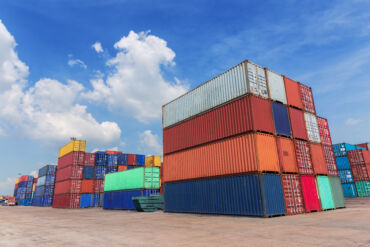For corporate tax professionals, navigating the ever-evolving landscape of tax codes and regulations is often a daunting task. Selecting the correct product classification codes and ensuring compliance with frequently changing and sometimes uncertain rules in one country can be complicated enough. But for those engaged in global trade across several jurisdictions, the level of complexity is multiplied.
The stakes are high. For example, using incorrect harmonized system (HS) codes can trigger a cascade of issues. Customs authorities may impose excessive fines and penalties for misclassifications, leading to unnecessary costs beyond inaccurate duty calculations.
This can include the risk of rejection during import or export, lengthy refund processes (even if you overpay duties), and the possibility of confiscation in some countries. Underpaying duties results in penalties and interest on the difference while claiming refunds for overpayment is often an uphill battle. Ultimately, these complications can cause significant financial burdens and delays, acting as a major drag on global trade and disrupting supply chains.
_____________________________________________________________________________________________
Corporate tax and trade professionals need a smart way to map requirements in different countries and pinpoint the precise codes to use quickly.
____________________________________________________________________________________________
The challenges of product classification for corporate trade professionals
Product classification involves assigning a specific code to a product based on its material composition, function, and use. This straightforward task becomes a monumental challenge when dealing with complex tax codes, global operations, and time constraints.
Tax regulations are intricate and vary significantly around the world. A slight nuance in a product description can lead to a different classification and, consequently, different tax rates. Corporations operating across borders need to classify products for multiple jurisdictions, each with its own set of codes, regulations, and tariffs, which can sometimes be updated hundreds of times a year. What’s more, manually sifting through reams of tax codes and product descriptions is time-consuming, repetitive, and prone to error.
To illustrate the scale of the challenge, in the U.S. alone, there are three different industry classification systems for merchandise trade. These include the North American Industry Classification System (NAICS), the Standard International Trade Classification (SITC), and the Harmonized System (HS). The latter provides a standardized international method of classifying traded products and is commonly used for exports – however, even so, there are country-specific elements to the classification codes that corporate tax and trade professionals must get right.
Legislative changes are creating even greater confusion, notably Section 174 Capitalization of the Tax Cuts and Jobs Act (TCJA), which has changed how research and development (R&D) expenses are treated for tax purposes, impacting the applicable tax codes in the process. The proposed H.R. 7024 Tax Relief in American Families and Workers Act of 2024, which relates to the tax treatment of domestic versus overseas research expenses, could muddy the water even more.
How does AI help with product classification?
Tax and trade professionals could benefit from solutions that make it easier and faster to select the correct tax code in each case. This is where Artificial Intelligence (AI) comes in, offering a powerful tool to transform the way product classification is handled. It works in several ways, for example:
- Machine Learning for Automated Classification: Machine learning algorithms can be trained on vast datasets of product information and tax codes. They learn to identify patterns and relationships, enabling them to make suggestions on how to classify new products.
- Natural Language Processing (NLP) for Text Analysis: Tax codes and product descriptions are often riddled with technical jargon. NLP allows AI to understand the nuances of tax language and product specifications, leading to a more precise classification process.
- Image Recognition for Enhanced Product Analysis: For complex products with intricate features, AI can leverage image recognition technology. By analyzing product images, AI can identify key characteristics and suggest relevant tax codes.
Deploying AI for the heavy lifting
AI can generate significant efficiency gains. Since tax and trade professionals aren’t tied up performing mundane manual tasks, they have more time to focus on critical, intellect-intensive work such as core tax planning and strategic analysis. It also boosts trade compliance and efficiency.
Accuracy is improved because AI can collate data from business documents (and other sources) in real-time, and analyze it at volume in a way that is impossible for humans to do, while still being able to pick up on subtle differences in tax codes. For instance, in the example of s.174, AI tools can review R&D expenditures and help classify them as either an expense or an asset.
Compliance with global tax regulations is enhanced and simplified because AI can provide consistent classification practices across different jurisdictions. Plus, costs are reduced by minimizing errors and penalties, saving money on tax liabilities – in addition to the productivity gains/reduced labor costs resulting from automation.
The benefits are only going to increase as AI advances, and its role in product classification grows. In the future, we can expect to see generative AI being used for code recommendations, whereby AI models could generate the most appropriate tax code based on a product description and relevant regulations. It has scope for continuous learning and adaptation, ensuring that AI models remain accurate and relevant in the face of changing regulations and tariffs, as they can constantly be updated with new tax codes and product information. And it can integrate with tax software platforms to create a seamless workflow for tax professionals.
Human expertise + AI = a powerful partnership
While AI offers tremendous advantages, it’s important to remember that it’s not a replacement for human expertise. Corporate tax professionals will need to oversee AI, and will still have a crucial role to play in applying their own judgment and bringing their expertise to bear for the company’s good.
They will need to understand how AI works, so they can check its performance, sense-check the results it is producing, and adjust the data on which it is being trained when necessary. Furthermore, there may be situations where AI recommendations require further analysis or human intervention due to complex legal or business considerations. And while AI can support product classification, tax professionals will continue to leverage their expertise to develop optimal tax strategies for corporations.
AI can revolutionize product classification for corporate tax professionals. By delivering on-point classifications faster, AI can streamline global trade, and guarantee tax compliance, while empowering tax professionals to focus on providing higher-value services to the business.
Ultimately, AI should increase job satisfaction by eliminating tedious tasks and augmenting professional capabilities. As AI technology continues to evolve, an even more powerful partnership between humans and machines looks set to develop.
Blog
Unlocking efficiency: The impact of AI on compliance and reporting
International trade and supply chain
Harmonized Tariff System (HTS) classification. Spend fewer hours determining and maintaining product classification. Learn more












